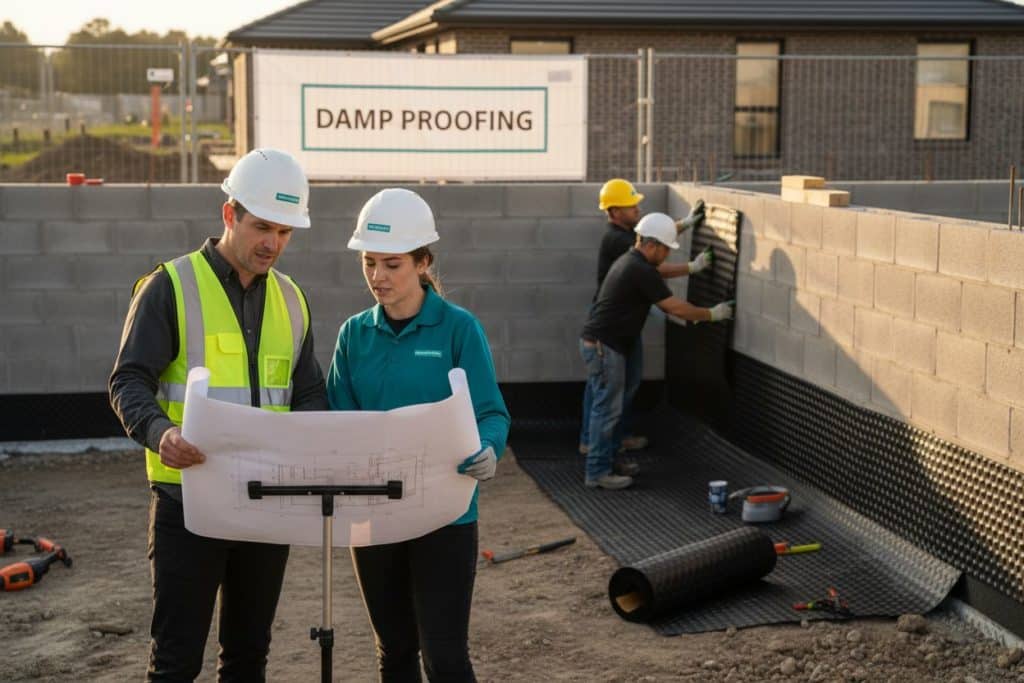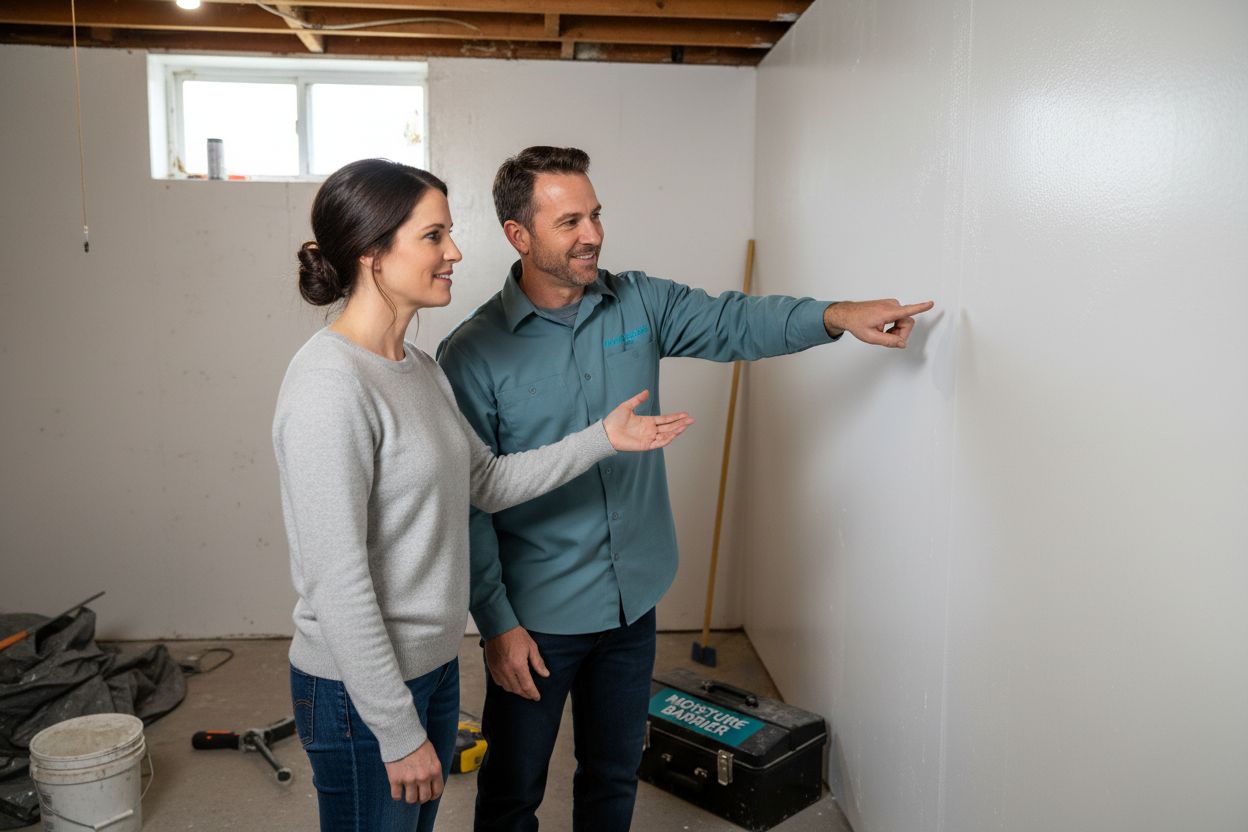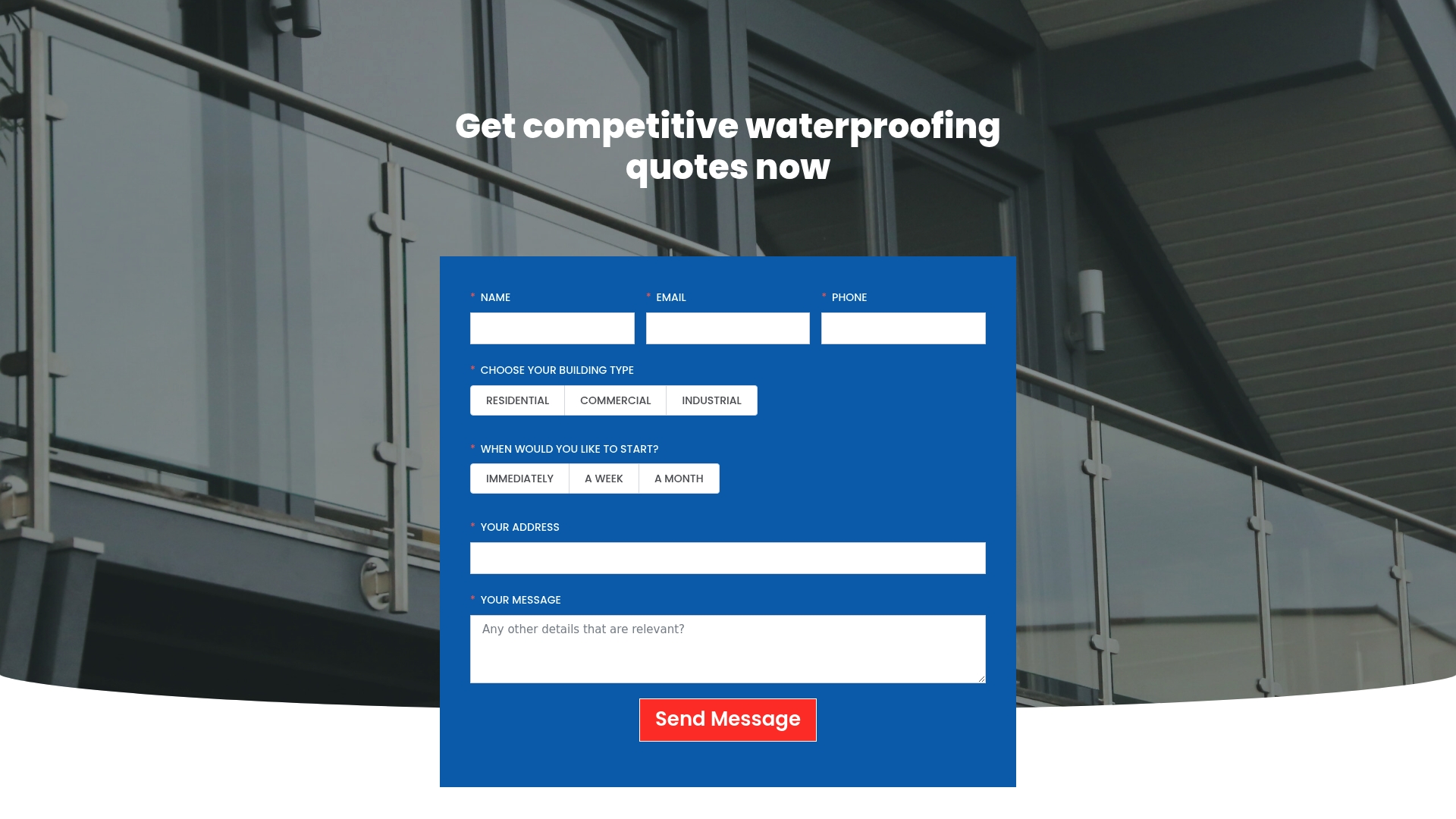Moisture is a silent intruder that can quietly eat away at even the strongest buildings. Nearly 80 percent of structural damage in older properties is linked to unchecked damp and moisture. Most people expect that a fresh coat of paint or a quick fix should make the problem vanish. The real surprise is that true protection goes far beyond surface treatments and involves layers of science you probably never imagined.
Table of Contents
- What Is Damp Proofing And Its Purpose?
- Why Damp Proofing Matters For Property Owners
- How Damp Proofing Works: The Mechanics Behind It
- Key Concepts And Methods Of Damp Proofing
- Common Misconceptions About Damp Proofing
Quick Summary
| Takeaway | Explanation |
|---|---|
| Damp proofing prevents moisture damage | It creates barriers that stop moisture from infiltrating building materials, preserving structural integrity. |
| Neglecting damp proofing incurs high costs | Failing to implement damp proofing can lead to expensive repairs and decrease property value over time. |
| Professional assessment is essential | Expert evaluations identify the best damp proofing methods tailored to specific building needs and environments. |
| Health risks come from damp environments | Moist conditions promote mould growth that can cause respiratory issues and other health problems for occupants. |
| Myths about damp proofing can mislead owners | Understanding common misconceptions helps property owners make informed decisions about moisture management solutions. |
What is Damp Proofing and Its Purpose?
Damp proofing represents a critical protective technique in building construction designed to prevent moisture infiltration and protect structural integrity. At its core, the definition of damp proofing involves creating a barrier against ground moisture, water vapour, and environmental humidity that could potentially damage building materials.
Understanding Moisture Intrusion Challenges
Moisture represents a significant threat to buildings, capable of causing extensive damage if left unchecked. Water can penetrate building structures through various mechanisms including ground seepage, capillary action, and atmospheric condensation. These moisture pathways can lead to serious structural problems such as:
- Deterioration of building foundations
- Weakening of structural materials
- Potential mould and fungal growth
- Compromised thermal insulation properties
- Reduced overall building lifespan
Core Principles of Damp Proofing
The fundamental objective of damp proofing is to create a robust moisture barrier that prevents water from migrating through walls, floors, and foundations. According to building construction experts, this process typically involves applying specialized membranes, chemical treatments, or physical barriers that block moisture transmission. Read more about our comprehensive damp proofing techniques to understand how these protective measures safeguard your property.
Effective damp proofing requires a strategic approach that considers the specific environmental conditions, building materials, and potential moisture entry points. Professional assessment helps determine the most appropriate damp proofing method, ensuring long-term protection against moisture related structural degradation.
Why Damp Proofing Matters for Property Owners
Damp proofing is not merely a technical construction requirement but a critical investment in property preservation and value protection. Property owners who understand the profound implications of moisture damage can save substantial financial resources and maintain their buildings structural integrity through proactive moisture management.
Financial Consequences of Neglecting Damp Protection
Ignoring damp proofing can lead to exponentially escalating repair costs. Water infiltration gradually compromises structural elements, causing progressive damage that becomes increasingly expensive to remedy. Research on property maintenance indicates that moisture related repairs can cost property owners significantly more when delayed compared to preventative interventions.
The potential financial impacts include:
- Structural foundation weakening
- Accelerated material degradation
- Decreased property market value
- High cost of extensive structural repairs
- Potential complete building reconstruction requirements
Health and Comfort Implications
Beyond financial considerations, damp environments create substantial health risks for occupants. Uncontrolled moisture promotes mould growth, which can trigger respiratory issues, allergic reactions, and long-term health complications. Explore the risks associated with damp environments to understand the comprehensive impact on residential and commercial spaces.
Professional damp proofing provides more than structural protection it ensures a safe, healthy living environment by mitigating moisture related health hazards.
Property owners who invest in comprehensive moisture management strategies protect both their financial assets and the wellbeing of building occupants.
How Damp Proofing Works: The Mechanics Behind It
Damp proofing operates through sophisticated mechanisms designed to prevent moisture penetration and protect building structures from water related damage. Understanding these intricate processes reveals how specialized treatments create robust barriers against environmental moisture challenges.
Physical and Chemical Barrier Technologies
The core principle of damp proofing involves creating impenetrable layers that block water transmission through construction materials. According to building conservation experts, these barriers can be implemented through multiple innovative approaches:
- Bituminous membrane applications
- Chemical crystalline treatments
- Cementitious waterproofing coatings
- Specialized polymer based sealants
- Mechanical drainage systems
Moisture Transmission Prevention Strategies
Moisture can infiltrate buildings through complex pathways including capillary action, hydrostatic pressure, and atmospheric condensation. Damp proofing technologies counteract these mechanisms by interrupting potential water migration routes. Learn more about advanced damp proofing techniques to understand the nuanced strategies professionals employ.
Effective damp proofing requires a comprehensive approach that considers the specific environmental conditions, building materials, and potential moisture entry points. Professional assessment helps determine the most appropriate intervention, ensuring long term protection against structural moisture damage.
Below is a comparison table outlining commonly used damp proofing methods and their key characteristics, helping you understand the differences between each approach.
| Method | Type of Barrier | Typical Application Area | Notable Characteristics |
|---|---|---|---|
| Bituminous Membrane | Physical | Walls, foundations | Flexible, adhesive sheets; strong water resistance |
| Chemical Crystalline Treatment | Chemical | Concrete surfaces | Seals pores/cracks from within; permanent effect |
| Cementitious Waterproofing Coating | Physical/Chemical | Basements, water tanks | Applied like plaster; bonds to masonry |
| Specialised Polymer Sealant | Chemical | Joints, cracks | Highly elastic; ideal for movement-prone areas |
| Mechanical Drainage System | Physical | Below ground level | Diverts water away from structure; needs outlet |
Key Concepts and Methods of Damp Proofing
Damp proofing encompasses a sophisticated range of scientific techniques designed to protect buildings from moisture infiltration. Understanding these methodologies requires examining the intricate approaches professionals use to create robust moisture barriers and prevent potential structural damage.
Traditional and Advanced Damp Proofing Approaches
Contemporary damp proofing strategies blend traditional methods with cutting edge technologies. Construction materials experts highlight several critical techniques for moisture protection:
- Chemical damp proof course insertion
- Waterproof membrane applications
- Bituminous coating treatments
- Specialized polymer sealant implementations
- Mechanical water drainage system installations
Classification of Damp Proofing Techniques
Damp proofing methods can be categorized based on their application mechanism and target area. Different approaches address specific moisture challenges depending on building structure, environmental conditions, and potential water infiltration points.
Discover comprehensive strategies for managing damp in residential spaces to understand the nuanced approach required for effective moisture control.
Professional damp proofing requires a holistic assessment that considers geological conditions, building materials, construction age, and potential moisture transmission pathways. Each technique offers unique advantages, making professional consultation crucial for selecting the most appropriate moisture protection strategy.
Common Misconceptions About Damp Proofing
Damp proofing is surrounded by numerous myths that can lead property owners to make uninformed decisions about moisture protection. Understanding these misconceptions is crucial for implementing effective moisture management strategies and protecting building structures from potential water related damage.
Misunderstandings About Moisture Protection
Many property owners hold incorrect beliefs about damp proofing that can compromise their building’s structural integrity. These misconceptions often stem from limited understanding of moisture dynamics and professional protection techniques:
- Believing painting walls solves moisture problems
- Assuming older buildings cannot be effectively damp proofed
- Thinking damp proofing is a one time permanent solution
- Underestimating the complexity of moisture transmission
- Considering damp proofing unnecessary in dry climates
Debunking Popular Damp Proofing Myths
Contrary to popular belief, damp proofing is not a simple cosmetic treatment but a sophisticated scientific approach to moisture management. Explore the most persistent myths about moisture protection to understand the nuanced reality of professional damp proofing. Professional assessments reveal that each building requires a tailored approach, considering unique environmental conditions, construction materials, and potential moisture infiltration points.
Effective moisture protection demands comprehensive understanding, professional expertise, and ongoing maintenance.
This table summarises common misconceptions about damp proofing contrasted with the actual facts, supporting informed decision-making and debunking popular myths.
| Misconception | Reality |
|---|---|
| Painting solves moisture problems | Paint is superficial; true damp proofing involves barriers |
| Older buildings cannot be damp proofed | Modern techniques can treat older structures effectively |
| Damp proofing is a one-time permanent solution | Periodic assessment and maintenance are necessary |
| Moisture is only a concern in wet climates | Even dry climates can experience damaging moisture |
| Damp proofing is merely cosmetic | It is a scientific, structural protection process |
Take Action Today to Secure Your Property Against Damp Damage
Have you noticed moisture creeping into your walls or foundations? Understanding the definition of damp proofing is not enough if your property is already at risk. As discussed in the article, unchecked moisture leads to structural deterioration, health hazards, and rising repair costs. Many property owners underestimate damp problems, but early intervention is key.
Discover more insights on property protection
Do not wait until damp issues become unmanageable. Reach out to Pro Waterproofing and benefit from expert assessment and tailored solutions that safeguard your investment. Take the next step towards a safer, healthier home or business by contacting our experienced team for a comprehensive damp proofing consultation.
Frequently Asked Questions
What is the definition of damp proofing?
Damp proofing refers to the methods used to create a barrier against moisture infiltration in buildings. This involves applying specialised membranes, chemical treatments, or physical barriers to prevent water from damaging structural materials.
How does damp proofing prevent moisture intrusion?
Damp proofing works by blocking potential pathways for moisture to enter a building, such as through walls and foundations. Consider implementing a damp proof course in the construction phase to establish effective moisture protection early on.
What are the main methods of damp proofing?
Main methods of damp proofing include the application of bituminous membranes, cementitious waterproofing coatings, and chemical crystalline treatments. Review the specific conditions of your property to determine which technique is most suitable for preventing moisture transmission.
How often should I assess my property’s damp proofing needs?
You should assess your property’s damp proofing system every few years or whenever you notice signs of moisture intrusion, such as damp patches or mould. Regular inspections can help prevent extensive damage and reduce the risk of costly repairs by identifying problems early, ideally within 6-12 months after initial installation.
Can older buildings benefit from damp proofing?
Yes, older buildings can be effectively damp proofed with modern techniques that address their specific structural challenges. Contact a professional for an assessment to explore the appropriate damp proofing solutions available for your building’s unique conditions.
How does neglecting damp proofing affect a property?
Neglecting damp proofing can lead to serious structural damage, mould growth, and decreased property value. Act promptly to implement damp proofing solutions if you notice any moisture issues to protect your investment and ensure a safe living environment.



